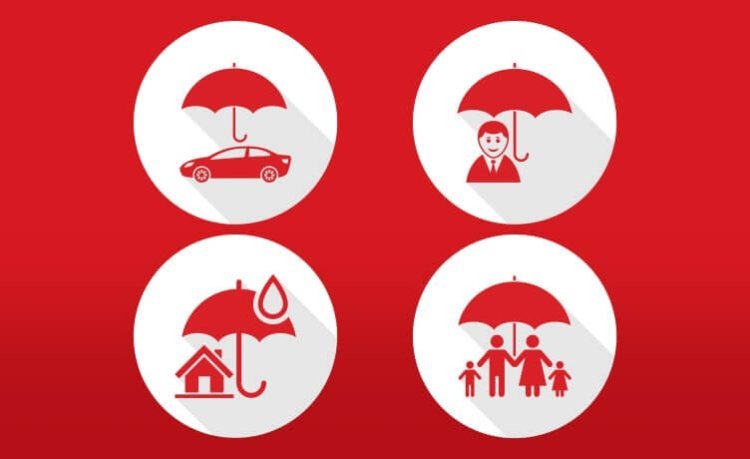Understanding Insurance: The Risk Mitigation Financial Tool
insurance companies were nationalised and many private players were founded. The insurance provider has excellent insurance plans for individuals, businesses, and other assets for risk mitigation. According to a report by Statista, the annual insurance value collection is more than seven trillion Indian rupees.

Insurance is a policy agreement in which the insurer agrees to pay a certain amount to the insured individual in the case of a certain loss in exchange for a fee. It is a huge part of risk management; the insurer provides financial protection to individuals, businesses, or properties in the event of uncertain loss. It is interesting to note that the existence of insurance goes back to the pre-independence era in India. After Independence, insurance companies were nationalised and many private players were founded. The insurance provider has excellent insurance plans for individuals, businesses, and other assets for risk mitigation. According to a report by Statista, the annual insurance value collection is more than seven trillion Indian rupees.

Penetration Level of Insurance in India
There has been an upward growth in the insurance industry in India. As our country is the fifth largest insurance market in the world, there is significant awareness about different policies among common people. As per some reports, the year-on-year growth of the insurance sector is recorded to be 32 to 34%. With the increased number of insurance providers, the industry has healthy competition. Along with this, there has been growth in terms of foreign investment in the sector in the last decade. Approximately USD 54,000 direct foreign investment, owing to the friendly foreign capital flow regulations by the Indian government.
Transformation of the Insurance Industry
India’s insurance industry is highly structured with new developments, amendments, and regulations. The industry is regulated by the Insurance Regulatory and Development Authority India (IRDA). The regulatory body is in sync with the long-term goal to achieve “insurance for all by 2047”. It ensures that with the changing requirements of the customers, insurers provide the right solution and stay relevant. The growth is driven by improved distribution and operational capabilities, adoption of technology, and a supportive regulatory environment.
Today, insurance risk score plays a key role in risk mitigation. It is a type of algorithmic computing with factors such as identity underwriting inputs, financial underwriting inputs, and health underwriting inputs. As the insurance penetration data grows, the computing input will become robust over time.
The Importance of Insurance
There is a massive economic cost of being uninsured, be it property, business or individual. According to several financial gurus, the wealth accumulated over time can go to waste if the person, entity or business is not protected against uncertainties. The cumulative economic progress of a nation is dependent on the awareness towards insurance and its huge role in giving peace of mind to the insured (person). Taking this into account, the government has reinstated the importance of insurance for growth and innovation.
Factors Driving the Growth of the Insurance Industry
- Customers: They are key stakeholders in the insurance industry. With the rising awareness and adoption of insurance policies, customers have become the major growth drivers.
- Products: There are different types of insurance schemes available on the market. The diverse portfolio with integrated solutions has played a crucial role in establishing a successful base for the insurance sector.
- Distribution: The distribution network of insurance providers has surged in recent years. The rise of technology and aggregator platforms has helped in insurance penetration in India.
- Data and Analytics: Customer data is useful for customised financial solutions. It helps persuade customers to buy insurance products for enhanced protection coverage.
- Cyber Security: Insurance providers have built trust with their customers with upgraded cyber security measures. Customers can get insurance products online and pay premiums on time with complete peace of mind.
Types of Insurance
Life Insurance
It is a financial agreement between the insurer and the policyholder. It guarantees the policyholder that their nominee will get a certain sum in the unfortunate demise of the policyholder. To keep the agreement, the policyholder must pay a premium during their lifetime. One can buy term insurance, endowment plans, and unit-linked insurance plans from the insurer.
Health Insurance
It is another type of insurance that covers the medical expenses of the insured person. Top insurance providers offer treatment, hospitalisation, and post-hospitalisation costs to the individual. There are different types of health insurance policies such as individual health insurance policy, family health insurance policy, and critical illness insurance.
Vehicle Insurance
Vehicle insurance is yet another type of insurance covering the cost of vehicle damage in case of accident, theft, or natural calamities. One can get car insurance, two-wheeler insurance, and commercial vehicle insurance to cover the cost of a vehicle from risk or damages.
Travel Insurance
Travel insurance is taken for domestic and international travel, which gives a sense of security to travellers. The insurance provides protection against damages or losses incurred during travel. It can be due to lost baggage at the airport, theft, medical emergency or any other unpleasant circumstances.
Property Insurance
Property insurance covers the loss or damage of personal or commercial property due to natural calamity or man-made incidents. The person has to pay the premium to get insurance from the company.
Group Insurance Policy
A group insurance policy covers several individuals in the same contract. In this type of insurance, the insurance coverage is the same for every individual, which does not depend on the age, occupation, or economic status of individuals. Many companies or corporate offices take this insurance coverage for their pay-out plan. These plans offer standardised coverage at affordable premium rates.
Getting insurance is a protection cover for oneself or assets. It hedges risk factors and gives much-needed mental peace. With many government initiatives and affordable policies on the market, customers are responding positively to the importance of insurance.
What's Your Reaction?











![Wireless Connectivity Software Market Size, Share | Statistics [2032]](https://handyclassified.com/uploads/images/202404/image_100x75_661f3be896033.jpg)



